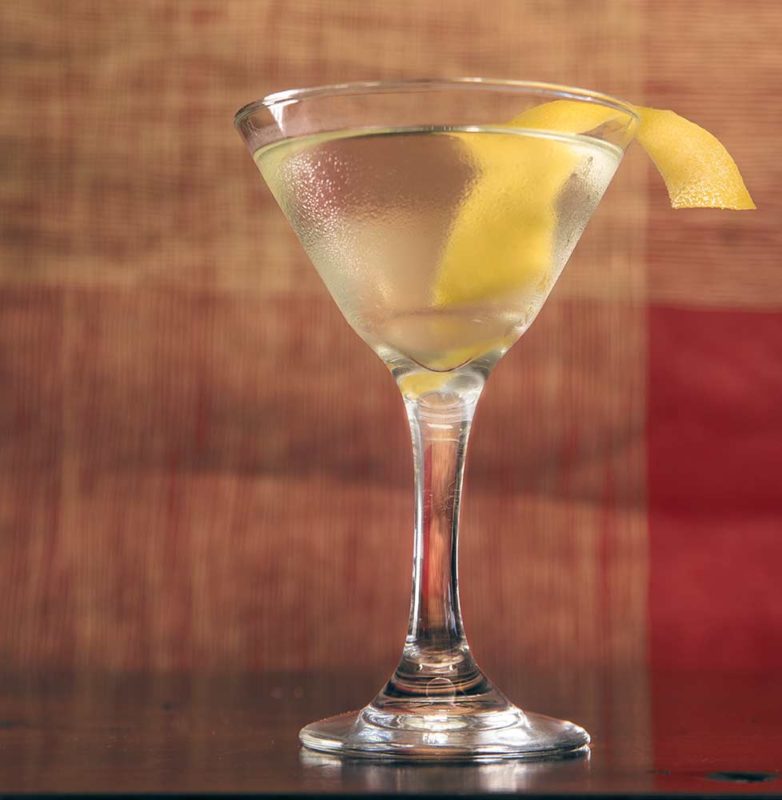Want to take your saketini game pro? There are many variations of this sake drink, but some are much better than others.
This article breaks down this modern sake cocktail into easily digestible parts. You’ll learn what sake type is best, a diverse set of recipes, and how to customize the ultimate saketini.
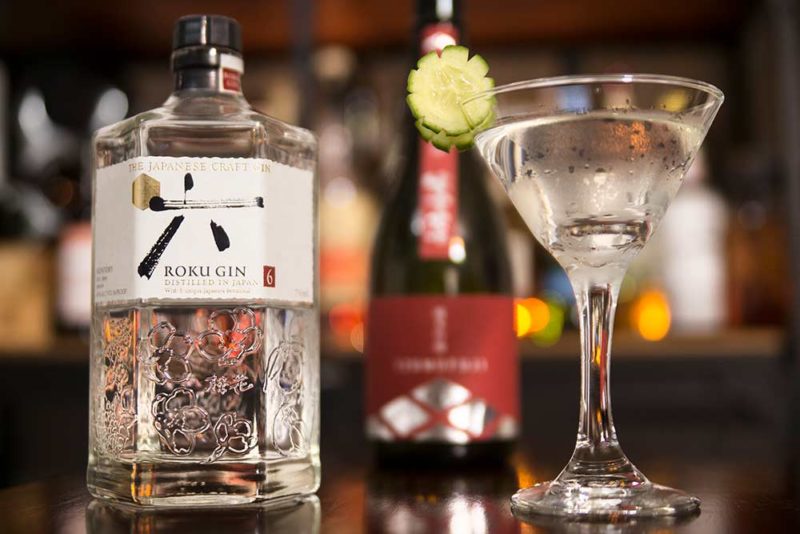
Gin or Vodka Saketini?
Vodka is the standard choice for most saketini drinkers. That said, gin will produce a more complex drink. Shochu, plum wine, and liqueurs also make interesting choices.
The Gin Saketini
Gin is our spirit of choice for making this sake cocktail.
There are a few Japanese gins available in the US, and they all make a tasty saketini. We prefer Suntory Roku due to its complexity and smooth nature. Nikka Coffey Gin is another fine option. London Dry styles will work too.
There are a million variations of the saketini. But this is by far our favorite recipe to date.
- 1 ounce each of the following:
- Suntory Roku Gin
- Ginjo-shu (fruity, floral sake)
- Dolin Dry Vermouth
Yes, vermouth. It’s a classic martini ingredient and it works remarkably well in a saketini.
Combine all ingredients in a shaker pint, add ice, then stir. Strain the liquid into a chilled martini glass or coupe. Use a lemon twist (express the citrus over the drink) or a slice of cucumber to garnish.
You can substitute a different brand of vermouth if you like.
This simple 1:1:1 ratio is fruity, fresh, and balanced. The restrained alcohol content also helps it complement food.
Recommended Gin Saketini Products
We may earn commissions on qualifying purchases.
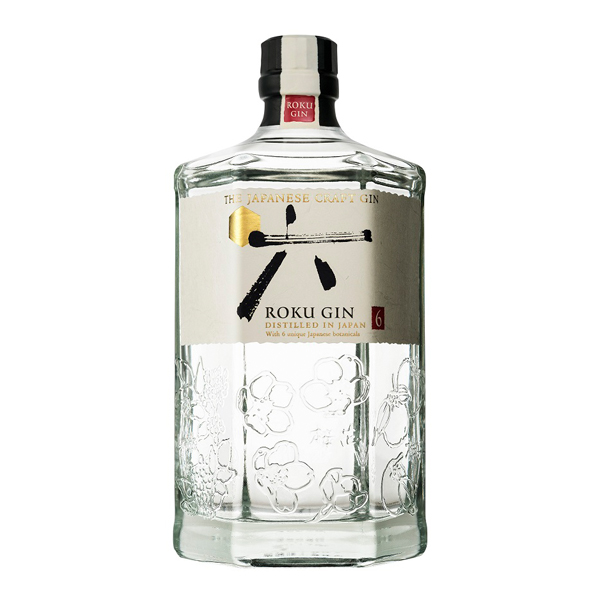
Suntory Roku Gin
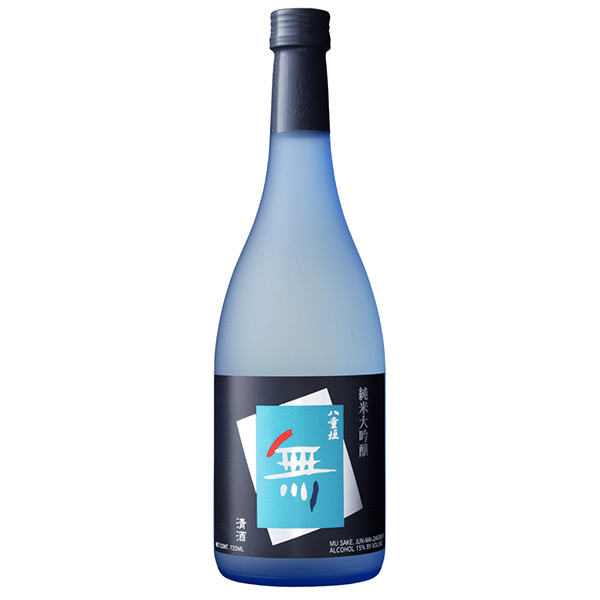
Yaegaki Mu Junmai Daiginjo
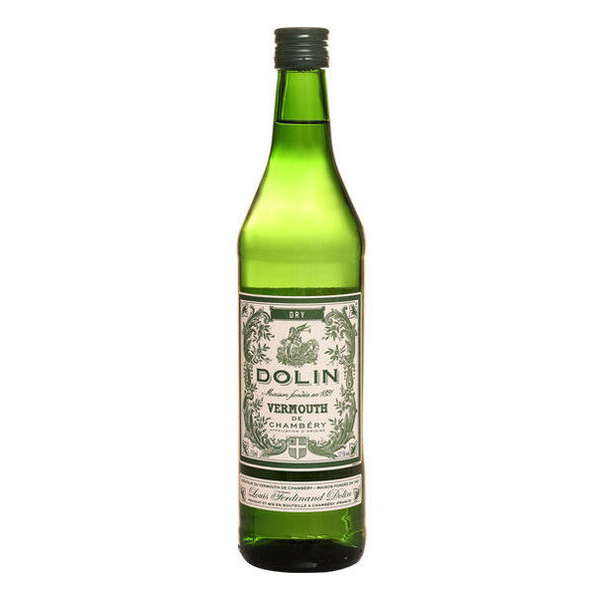
Dolin Dry Vermouth
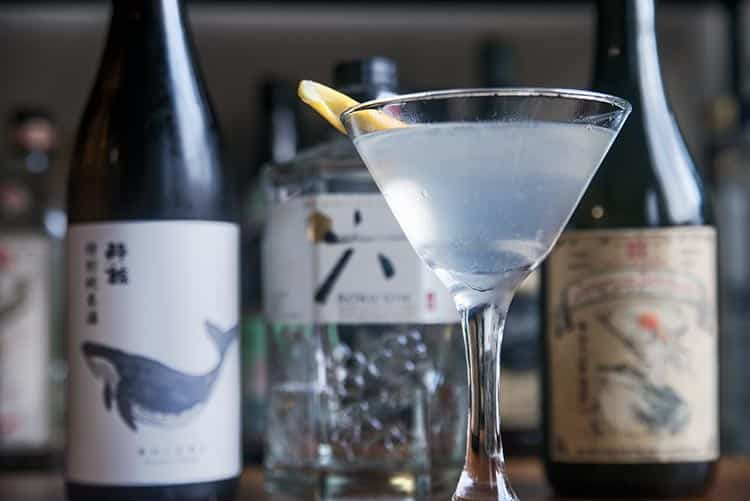
The Ultimate Saketini
This version of the saketini uses all Japanese ingredients. This has only become possible somewhat recently with the introduction of Japanese vermouth.
This recipe combines the classic gin martini and the saketini.
- 1 ounce each of the following:
- Suntory Roku Gin
- Ginjo-shu (fruity, floral sake)
- Oka Kura Japanese Bermutto
Combine the ingredients into a mixing glass. Add ice and stir until well-chilled. Strain into a chilled martini glass or coupe.
Garnish with either a lemon swath or a cucumber.
Vodka Sake Martini Recipe
As stated earlier, vodka is the most common choice for making sake drinks. It’s a neutral spirit, meaning it doesn’t have much flavor of its own. Japanese and European vodkas will have more character than American examples if that’s what you prefer.
Using vodka for your saketini is like fortifying the sake. You’ll boost the aromatic intensity a bit, dampen the sake’s flavor, and stiffen-up the drink.
Again, a good rule of thumb is a 2:1 ratio of sake to vodka.
Using a flavored vodka like Effen Cucumber can be a fun way to customize your recipe. Citrus vodkas like Absolut Citron or Smirnoff Citrus are also delicious combos with sake.
The Shochu Saketini: Cold or Hot
Shochu is Japan’s native spirit, and it consists of many different types.
Rice shochu (kome-jochu) is basically distilled sake. They tend to have a soft, fruity, and floral profile. This is really nice in a saketini.
Barley shochu (mugi-jochu) is another common type. The profile is similar to rice shochu. Iichiko is the most famous producer of barley shochu.
Sweet potato shochu (imo-jochu) is also common and quite popular in Japan. Imo Shochu is often funky, herbal, and nutty. Pairing it with an earthy Junmai or Honjozo could produce a very rich and savory saketini.
Shochu comes in a range of strengths from 20%-45% abv, with the majority range between 20% and 25%. This low alcohol content will produce a saketini of modest strength.
Serving shochu warm is a common and traditional practice. A warm saketini is an experimental drink, but one that could yield tasty results. If you go this route, we recommend adding 0.5 to 1 oz of hot water. You’ll also want to use tempered glass.
Saketini with Plum Wine
Plum wine, or umeshu, is a popular beverage in Japan and abroad. Plum wine tends to be sweet, light, and sour. Using umeshu to make a saketini will produce a pink-hued, floral cocktail of modest strength. A 1:1 or 2:1 ratio of sake to umeshu works every time.
Using Liqueurs to Make a Custom Saketini
A liqueur is a sweet, flavored spirit, that’s usually of moderate strength. Adding a splash to your saketini can yield interesting and delicious results. Recommended liqueurs include ginger, orange (Curacao or triple sec), cassis, elderflower, and melon.
If you can find it, lychee liqueur is also really nice in a saketini. Giffard makes a quality brand worth seeking out. Who wouldn’t enjoy a lychee saketini?
How to Choose the Perfect Sake for Your Saketini
Practically every sake will work fine in a saketini. But depending on your personal preferences, there’s probably a style out there that you’ll prefer.
We’ve identified two key variables in choosing the best sake. The first consideration is the price, and the second is the flavor profile of sake you want. Both are closely linked.
You don’t need to spend much to make a good saketini. The most affordable brands of sake in the US can be purchased for less than $10 per 720 ml bottle. Brands like Gekkeikan (soft, ricey, semi-sweet), Shochikubai Extra Dry (lean, dry, floral), Ozeki (savory, creamy, dry), and Yaegaki Junmai (full, earthy, complex) can be found easily and at bargain prices. These four brands are from famous Japanese rice wine brewers that have started breweries in California, which has significantly lowered their cost.
Moving up in price-point will get you into sake brewed in Japan. The most affordable of this group tends to be Honjozo and Junmai-grade sake. Expect to pay between $15 and $30 for these earthy, full-flavored brews.
There is a ton of variation amongst this group, of course. Some will be more intense than others, and sweetness is highly variable, as well. Most brands these days are on the dryer side.
You’ll make a more robust, earthy, and crisp saketini if you use Honjozo or Junmai sake.
The next tier of sake is the ginjo-shu category. This includes Junmai Ginjo, Ginjo, Junmai Daiginjo, and Daiginjo. These are fruity and floral sake that are generally light in body. They are labor-intensive to make and require highly-polished rice. These factors mean you should expect to pay more for them than other styles.
A saketini made with ginjo-shu will usually be light, aromatic, pretty, and fruity.
For more information on the different types of sake, check out our Sake Grades post.
Fine-Tuning Alcohol Strength
Another factor you’ll want to consider for your saketini is the final alcohol strength you desire.
A standard alcoholic drink in the US contains 0.6 oz of pure alcohol (ethanol). For a 40% abv spirit, that’s a 1.5 oz pour. And with 15% abv sake, that equates to a 4 oz serving size. Many cocktails, including the saketini, will use 3 oz of liquid ingredients.
It’s common to see a 1:1 ratio of sake to spirit for a saketini. Assuming an average strength of both, you’ll get something like the following:

That’s basically 1.6 drinks and is fairly stiff.
What happens with a 2:1 ratio of sake to spirit?

This cocktail ratio produces a strength equivalent to 1.2 drinks. It’s also a lot more sake-focused and smooth.
As a general rule of thumb, we suggest a 2:1 ratio of sake to spirit to make a saketini.
Let’s look at a classic cocktail for comparison: the margarita.

That amounts to about 1.25 drinks. Factor in the ice cubes and the final strength is similar to a 2:1 saketini.
Preparing Your Saketini: Shaken or Stirred?
A general rule of thumb for mixology is to shake drinks that contain citrus juice and stir the rest.
Stirring room-temperature liquid with ice usually yields around 0.75 oz of water dilution. Shaking often produces about 1 oz.
We recommend you stir your saketini.
Combine all the liquid ingredients into a shaker pint, add ice, and stir until the glass is very cold. Next, strain the ingredients into a chilled martini glass or coupe.
The two most common garnishes for a saketini are a slice of cucumber or a lemon twist. Both add their own touch of complexity to the finished drink. We recommend expressing the citrus peel over the drink if you choose the latter option.
